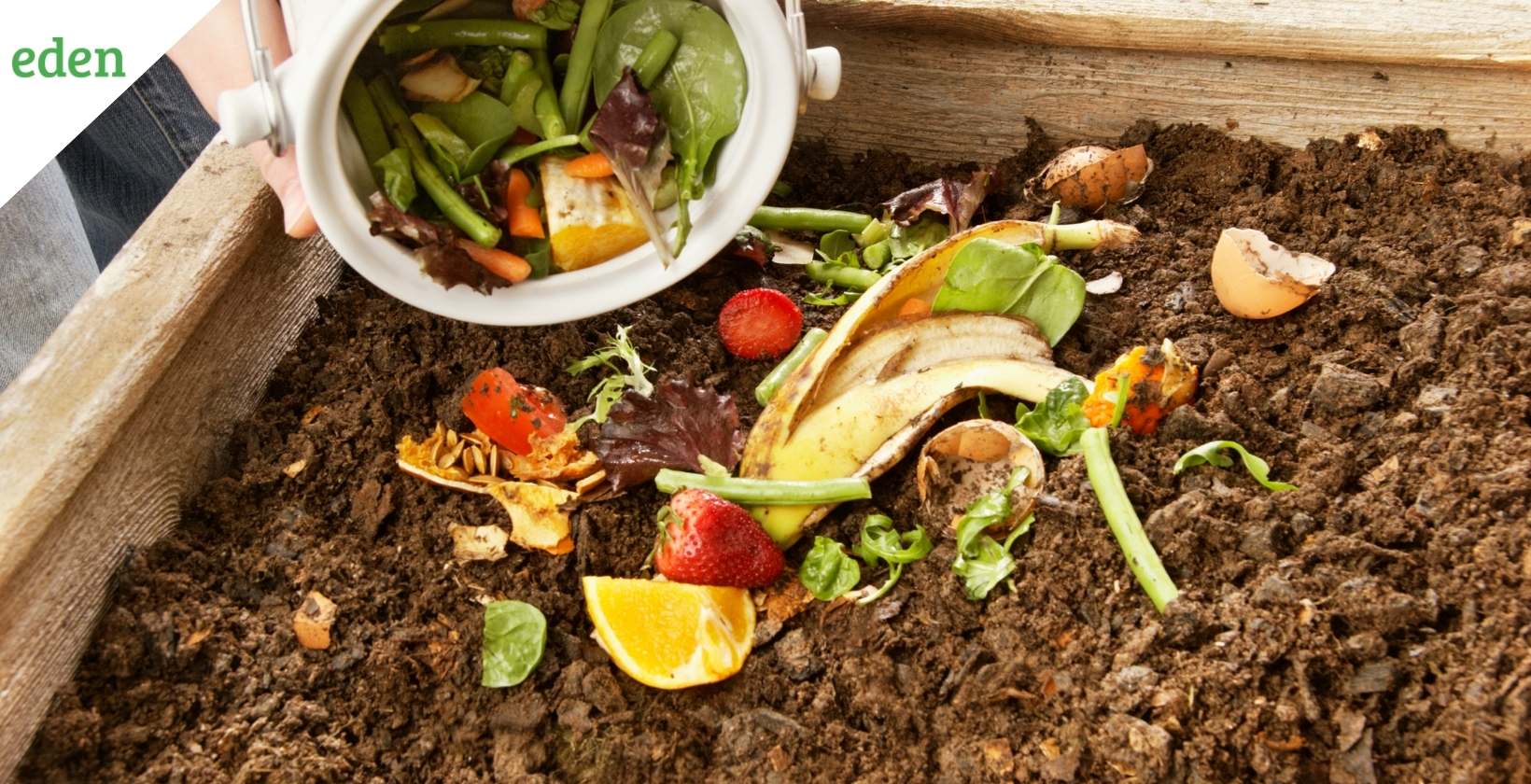
How to start your first compost pile?
You can easily create your first compost pile by mixing the right ingredients in the right proportion. You can use common household materials, such as coffee grounds, fruit and vegetable peels, leaves, tea, wood, shredded newspaper, soiled cardboard and eggshells.
Enjoy a beautifully manicured lawn with our timely yard work services that care for your yard according to the season. Call us today!
Compost is made when fungi, worms and bacteria secrete a mix of organic material called “black gold”. This is an extremely precious organic matter which, when added to the soil, improves its fertility, structure and water retention capacity. You can find ingredients for compost in normal things you use every day, including the organic waste produced at your home.
According to statistics, around 30- 40% of the food supply and around 22% of rubbish at the landfills can be used for making compost instead.
We all know that compost is extremely beneficial as a soil amendment. Composting has a significant part in improving the overall quality and fertility of your garden or yard. This technique has been used for centuries to grow flowers, shrubs and trees in abundance. You can easily create your first compost pile by preparing the right conditions for it.
Steps to Start a Compost Pile
The easiest way to start a compost pile is by creating a heap in the yard where you can tend to it conveniently. Make sure to choose a spot in the yard which is dry and has ample shade, close to a water source.
Step 1
Clear a space in your yard or garden till you can see the soil underneath the debris.
Step 2
Create a base layer using twigs and straws. Make this layer a few inches deep so that it allows for good drainage.
Step 3
Add compost ingredients in layers one at a time. Make sure to alternate between green and brown materials.
Step 4
Then you will need to integrate a nitrogen source to initiate decomposition. Gardening experts recommend using a handful of nitrogen-based fertilizer to start the decomposition process.
Step 5
You will need to keep the compost pile moist. So make sure to water it in a way that leaves it like a damp sponge, but avoid using too much water which needs to be squeezed out.
Step 6
The final step in starting a compost pile is turning the heap every couple of weeks. This allows the center of the pile to heat up. Aeration is important for decomposition as it provides oxygen to the microorganisms involved in the decomposition process. This step also helps to mix the ingredients well in the compost pile.
Stages of Creating Compost Piles
If you are planning to start your first compost file, you should know about the three stages of decomposition:
Stage 1 – Initial organic decomposition
The first stage of composting is the microorganisms that live in moderate temperatures begin to break down the ingredients into smaller pieces. This stage of composting takes around 2 to 3 days and begins to raise the temperature of the compost pile.
Stage 2 – Complex organic decomposition
When the temperature becomes too high for the moderate-temperature thriving microorganisms, the second stage of composting begins. In this, you will notice thermophilic microorganisms that thrive in higher temperatures. These microorganisms continue to break down fats, proteins and complex carbohydrates into even smaller particles.
Stage two of composting usually lasts between several days to a few months, depending on the specific conditions formed within the compost pile.
Stage 3 – Complete decomposition
In the last stage of composting, the thermophile microorganisms use the remaining supply of materials which lowers the overall temperature of the compost pile. This allows the medium-temperate microorganisms to return and resume the decomposition process. During this stage, these microorganisms continue to break down the organic materials still present in the compost pile. This allows the pile to mature into usable compost.
Different Ways to Create a Compost Pile
There are several different ways you can start a compost pile, such as by piling, using compost bins or using tumblers or Vermicomposting. The main difference between the four ways is how and where you pile the material for compost. The difficulty level and cost of making a compost pile will depend largely on the specific method used to create the compost pile.
Piling
This is a simple and most-used technique. It requires you to literally pile the compost ingredients into a pile. You will need to turn it frequently to aerate it.
Composting Bins
These are either open or closed containers that can be filled with compost ingredients. Open-lid compost bins allow aeration and ventilation while keeping the ingredients in place. You can fill the bin through the entry-point on one side and turn the pile too. On the other hand, closed bins are completely sealed using a lit and prevent the sight and smell of compost in your garden or yard.
Tumblers
This is a unique and efficient type of enclosed composting bin. It is cylindrical in shape and has handheld insets or handles that allow you to turn it easily and aerate it.
Vermicomposting
This is another name for “worm composting” and relies heavily on red wiggler worms to decompose the ingredients. This usually requires you to buy a special worm bin and uses mostly kitchen waste as compost ingredients.
How does Composting work?
There are five main components in the composting process:
- Carbon
- Nitrogen
- Oxygen
- Moisture
- Microorganisms
The duration of the entire process depends on the frequency of your involvement, the size of the compost pile and the ingredients you use in it. According to gardening experts, such as Eden, it takes anywhere from a few months to three years for the composting process to get completed.
Using moisture and oxygen, the microorganisms in the soil, such as bugs, worms, bacteria and fungi work to create compost in three stages. With the right balance of ingredients, microorganisms are able to decompose nitrogen and carbon so plants can extract the additional nutrients and are able to release oxygen. In simple words, the more nutrients the soil has, the more fertile it becomes.
Different Materials in Compost Piles
Majority of materials in a compost pile can be divided into brown and green materials, according to their properties:
Brown material
This is composed of carbon-rich items that provide the energy to the microorganisms in the pile, giving the compost its fluffy, light appearance. Usually, brown materials include bits of wood and fibers, including stems, branches, leaves, sawdust, shredded newspaper, tree bark, wood ash, pine needles and corn stalks.
Green material
This consists of nitrogen-based waste materials that provide the essential proteins and amino acids to the fungi and bacteria to perform their task. Food scraps, manure, coffee grounds, grass clippings and green leaves are common green materials found in a compost pile.
According to experts, the ideal compost pile should contain around 1/3 green material and the remaining 2/3 brown material.
Conclusion
Creating a compost pile is easy as you do not need to buy any ingredients from the store and can source everything at home, such as coffee grounds, leaves, tea, eggshells and wood, among others. Make sure to consult with expert gardeners, such as Eden, to find the most efficient and convenient technique to create your first compost pile.
Enjoy a beautifully manicured lawn with our timely yard work services that care for your yard according to the season. Call us today!

